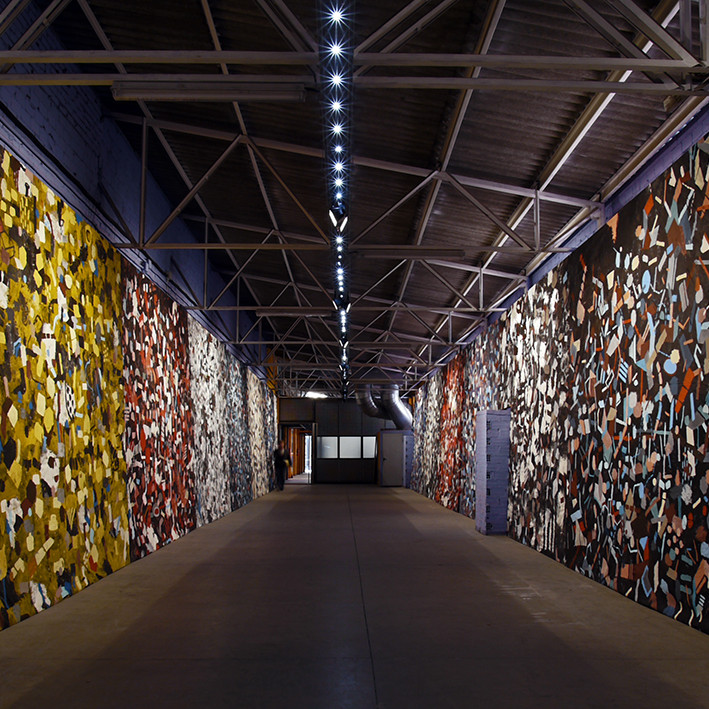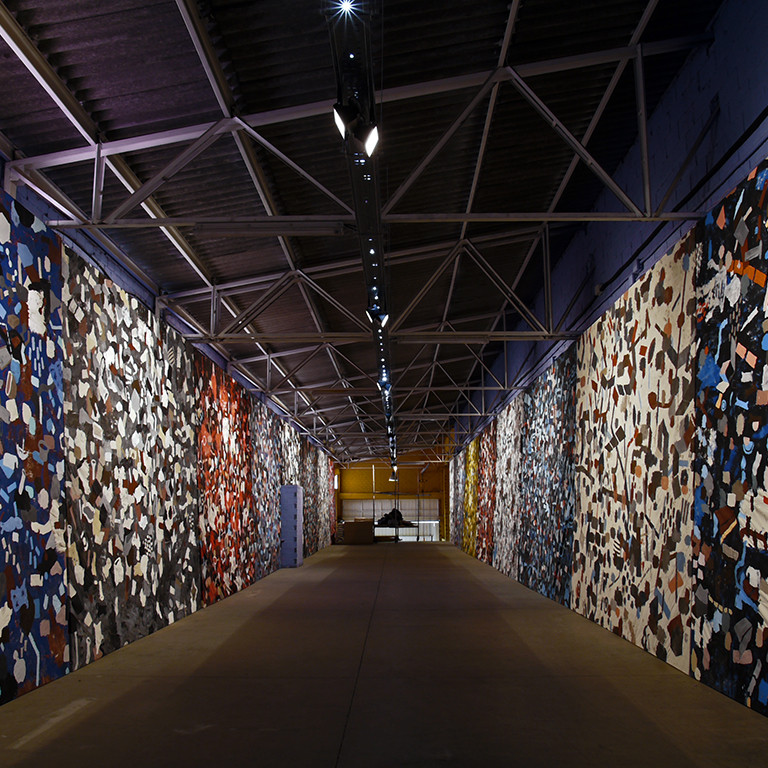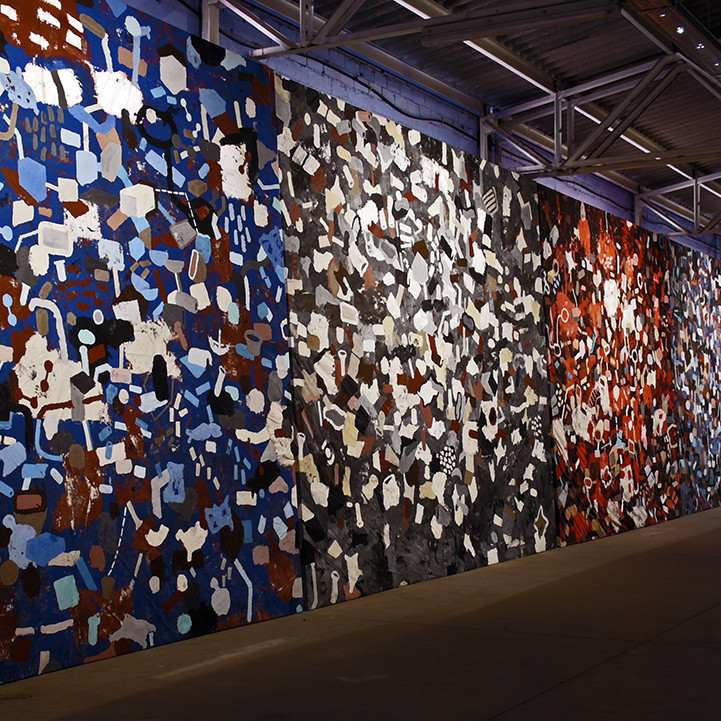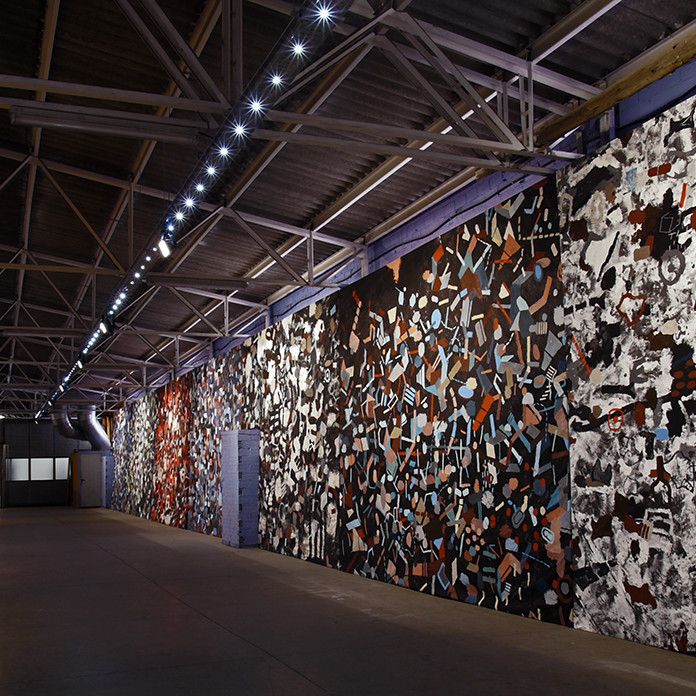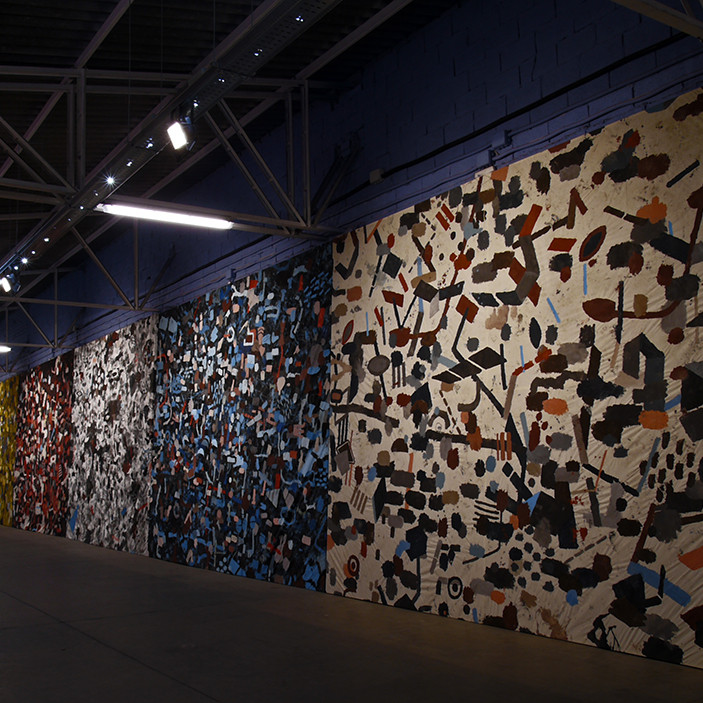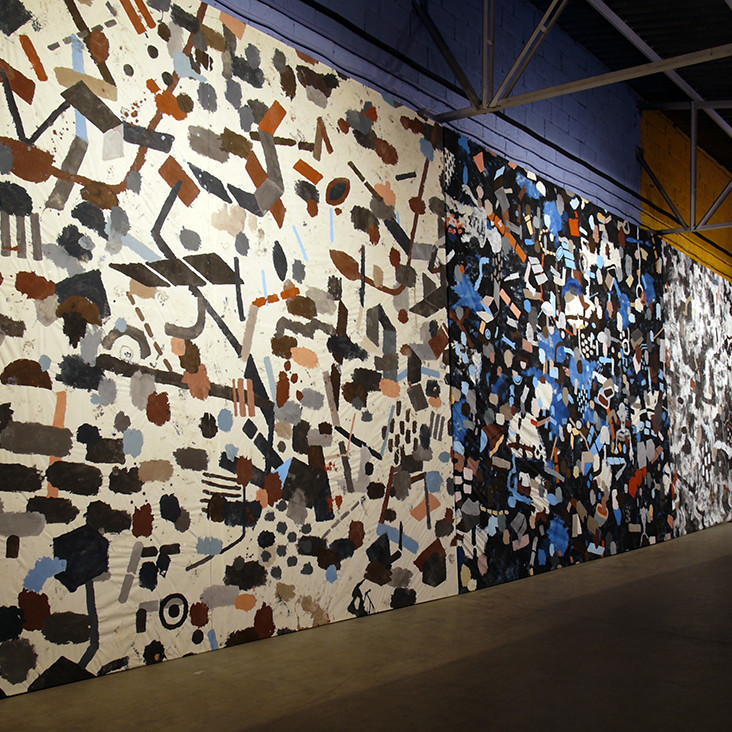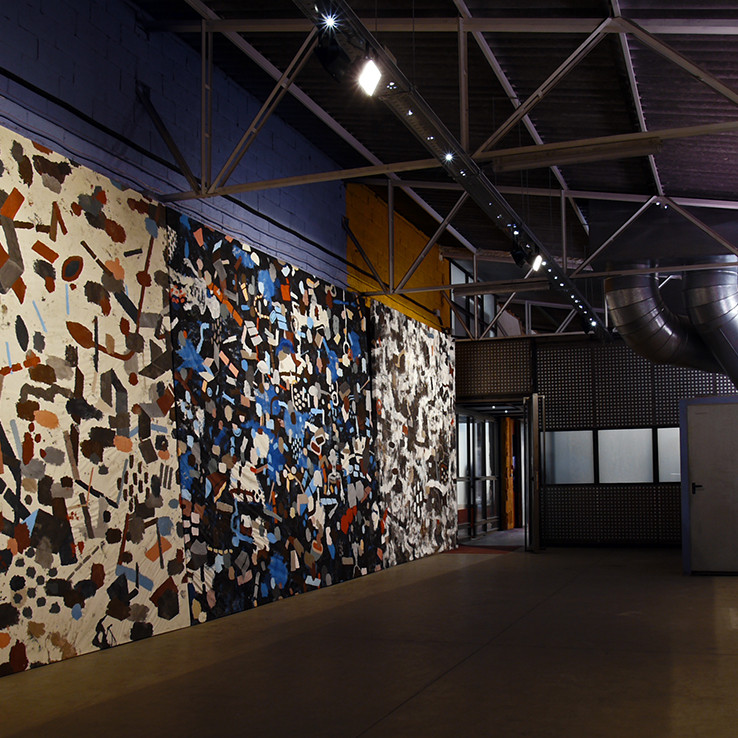DELIK / ESPACIO GRUPO FORJA / 2007
It is well know that art isn’t produced in a vacuum, that no artist is independent of his predecessors and models, and stemming from a specific tradition. In contemporary art, the paintings of Volkan Diyaroglu have parallels with historical vanguards as well as the legendary painters of the eighties, with references to gesture painting, to the action painters of the fifties such as Jackson Pollock, the art brut of Dubuffet and, closer to home, George Mathie or Jean Michel Basquiat, among others.
Nevertheless, a false sense of deja-vu shouldn’t influence the perception of the artist’s canvases in the least. One can appreciate how he immersed himself in his influences, both formal and those of process, to create experimental and free paintings whose borders continuously move in intuitive fountain of unlimited creativity. The elements are hybrids rather than pure, confused rather than clear, perversely indeterminate, elements that show the artist as a clear and individual personality.
From the purist or formalist point of view, the focus of abstract works such as these should be on the intrinsic values, on what the work of art is in itself, and not on what it represents. An abstract painting does not represent anything nor does it have any representative characteristic. The work is liberated from optical and linguistic suggestions, liberated from the codes of traditional representation, in spite of the fact that in this case we can find certain ironical touches and deceptive displays within the canvas.
Certainly, in the work of Volkan Diyaroglu, these intrinsic values of painting are essential. He uses large-scale canvases in the style of tapestries or carpets where the tendency toward the horror vacui unfolds, where leiv motive can be found, as much in the background tones as in the form of the brush marks, repeated throughout the surface.
His painting shows a strong gestural quality. The surface of the canvas is splattered in a spontaneous and energetic manner, without any a priori schema. His technique implies the concept of a work as a space of action, where the poured and spread paint and the tracks of the paintbrush on the surface determine the final impact of the canvas.
The creative process is defined in each palpable property of his painting, in the accumulation of the material and in the markings. The traces left horizontally on the large canvas can’t be reduced to the painting itself, but to the act of painting. Footprints, cigarette butts, and multiple attachments enrich the work’s surface.
All these elements converge into a decorative conception of painting. Elements that are usually the opposite to this, like the energy of the mark, the gesture, the track, stains, drips, and stuck-on objects, turn into decorative elements as in a tapestry.
In spite of this, the artist is not averse to introducing small representational elements, icons and forms, all of them done with simplicity and in a schematic form, including linguistic elements that move our gaze over the canvas. These elements make us doubt the existence of a final meaning of the work, one that is totally unknown to us. These relics indicate that we can both look at the canvas as well as through it, as if there exists a finality, a hidden message, a parallel reality beyond the materiality of the pigments.
Usually, we feel that works that do not have denotations can nonetheless refer to or connote an expression, an emotional state. We convert a display of colours, textures, and forms into emotions that we share, or believe to share, with the artist. By placing our attention on these qualities, we move to our own interpretation. When we believe that a form or color has an inherent expressive significance, we start the process of projecting as a spectator, in a way of reorganizing, of assimilating the world that we are accustomed to, or, as Nelson Goodman would say, another way of making new worlds.
In reality, this is not a contradiction, as long as we are not looking for absolute truths where they cannot be found. Beside any concrete, expressive or representative element that a painting may have, they simply represent an instant in the life of the artist, one of his acts, an expression of his personality. The instinctive sources of expression, it immediacy, or its impact, all connote the fragmentation of the self, the emergence of an individual who obeys the diverse logic of compartmentalized juxtapositions, the complex reality of the individual.
The same as the artist cannot hope that his work can duplicate the image he has in his mind, the spectator cannot hope for a concrete message. In both cases, we find that the transpositions of an acquired medium developed by tradition and skill, that of the artist and of the contemplator himself.
In the case of Volkan Diyaroglu, identifiable elements of Eastern culture intermingle with those of Western culture, beginning a meeting point between the two. He mixes intuition and spontaneity with meditated and mechanized processes of creation. The emphasis is on process, the importance of the tracks, the accidents in the creation, the irreverence that this brings to the contemplation of the work itself. They are merely samples, intimate references of a way of conceiving live, society, and art itself.
José Mir, 2007.

